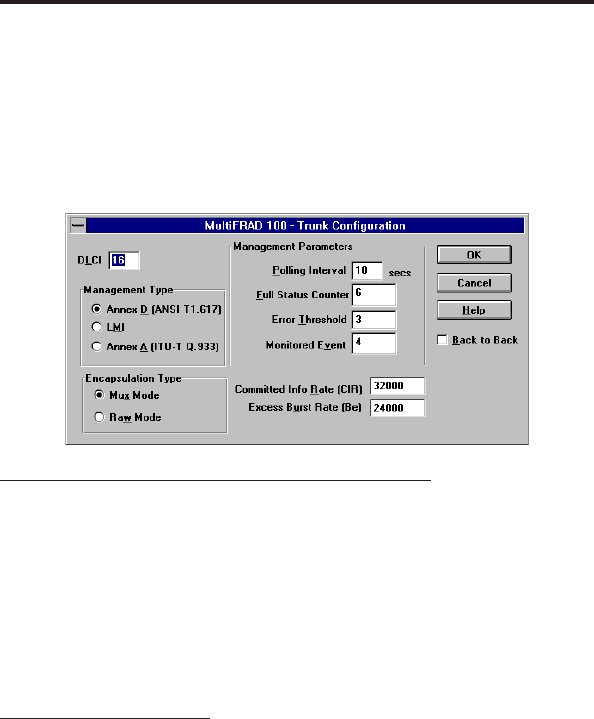
62
5.4 Trunk Configuration
This dialog box allows you to configure the trunk. You will be able to set
the parameters required for the successful operation of the trunk.
Frame Relay is a multiplexing protocol designed to operate over
transmission facilities that are virtually error free. In Frame Relay,
frames are routed through the network on the basis of an attached label
called a Data Link Connection Identifier (DLCI). Frame Relay combines
the bandwidth efficiency of packet switching with end-to-end protocol
transparency, increased speed and performance.
Data Link Connection Identifier (DLCI)
The DLCI is the identification of a particular logical link in the Frame Relay
network and has local significance only. The DLCI is assigned by the frame
relay service provider for the PVC (Permanent Virtual Circuit) that is on your
access circuit. As the logical link traverses the Frame Relay network, input
DLCI will be mapped to an output DLCI at every node. Access DLCIs for
permanent logical links are assigned at subscription time. Trunk DLCIs are
allocated dynamically. The valid value for a DLCI ranges from 16 to 1007
with a default of 16.
Management Type
The Management Interface defines a set of procedures and messages to
manage a PVC and the physical link at the user network interface. Three
management types are used: Local Management Interface (LMI), Annex A,
or Annex D. The management type is determined by the network service
provider at subscription time.


















